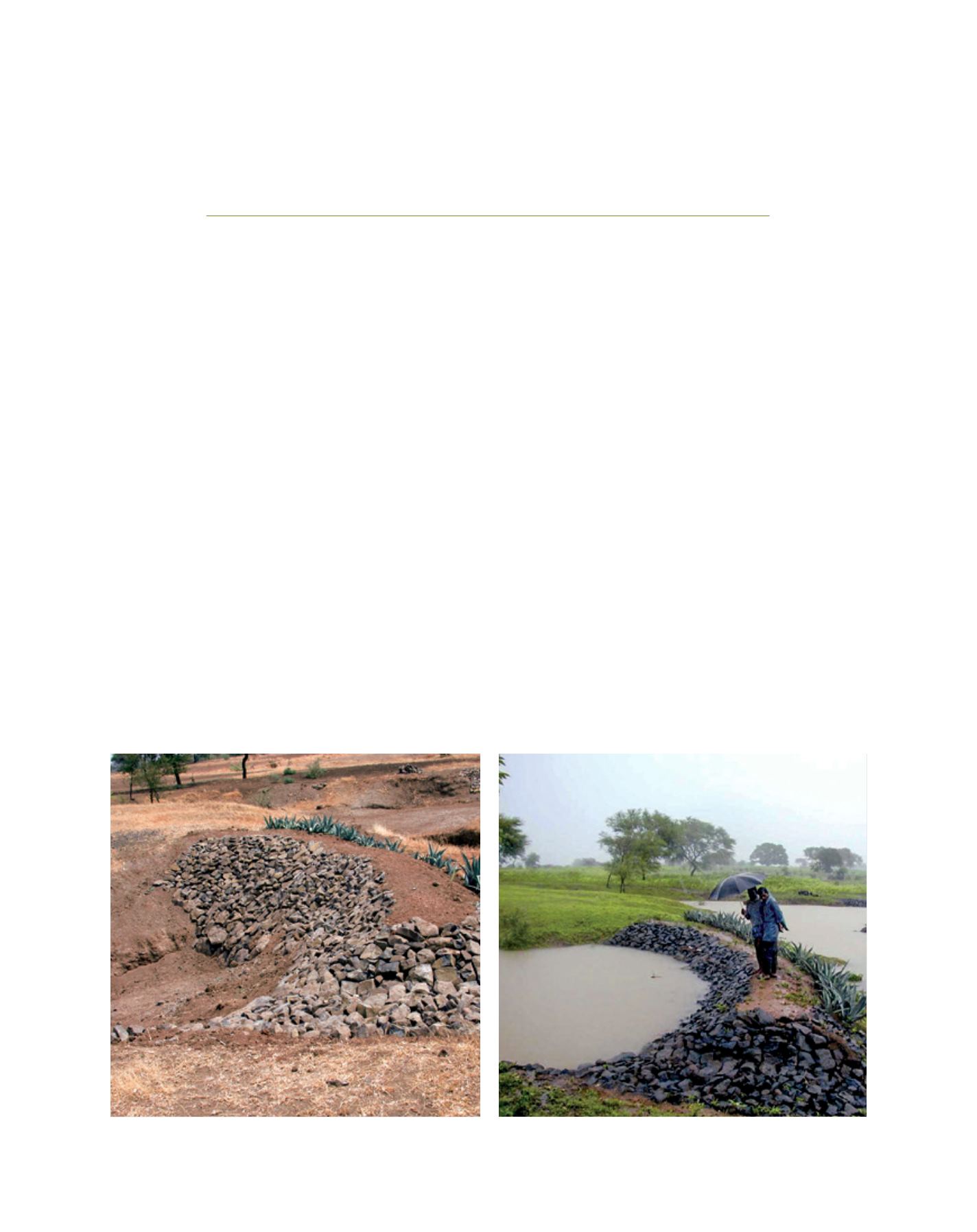

[
] 124
Harnessing the potential of
family farming in India and China
Suhas P Wani, Director and K H Anantha, Scientist, International Crops Research Institute
for the Semi-Arid Tropics Development Center; and William D Dar, Director General,
International Crops Research Institute for the Semi-Arid Tropics
N
inety per cent of the world’s farmers are in
developing countries and 85 per cent of farms
worldwide are less than 2 hectares.
1
Presently,
family farming feeds up to 80 per cent of the population
in Asia and sub-Saharan Africa, and supports the liveli-
hoods of up to 2.5 billion people.
2
Small family farms
will play a vital role in achieving food security for 9
billion people by 2050 as world agricultural production
will have to increase by 70 per cent.
3
Small family farms are more efficient in resource use and per-
unit productivity than large farms
4
but their full potential is
not yet realized. Thus, the challenge is to develop models for
unlocking the potential of rain-fed agriculture. There is a need
to transform family farms from a subsistence level to a busi-
ness model using innovative economies of scale, so they can
fulfil their multiple functions against adverse environmental
conditions and demographic transformations.
In Asia, almost all farms are small family farms, and
current farmers’ field crop yields are two to five times lower
than the achievable potential. In many parts of the world,
smallholder agriculture could contribute to growth and
employment, environment and climate change adaptation,
and food and nutrition security
5
by bridging these yield
gaps. In this context, family farms in India and China face
similar challenges such as fragmentation of farms, low crop
yields with subsistence farms, water scarcity, land degrada-
tion, acute population pressure and inability to access credit
and markets. The International Crops Research Institute
for the Semi-Arid Tropics (ICRISAT) and its partners have
established a ‘proof of concept’ demonstrating the potential
for transforming small family farms in Asia by adopting inte-
grated farmer-centric watershed management for improving
livelihoods. Two case studies from India and China illustrate
the technical, social and institutional nuances and innova-
tions used to harness the production efficiencies of small
family farms with scale efficiencies to access inputs and
markets through farmers’ collective action.
Researchers and development agencies in India have
adopted rainwater harvesting and soil conservation inter-
Low-cost water harvesting at Kothapally, Telangana, India
Images: ICRISAT
D
eep
R
oots
















